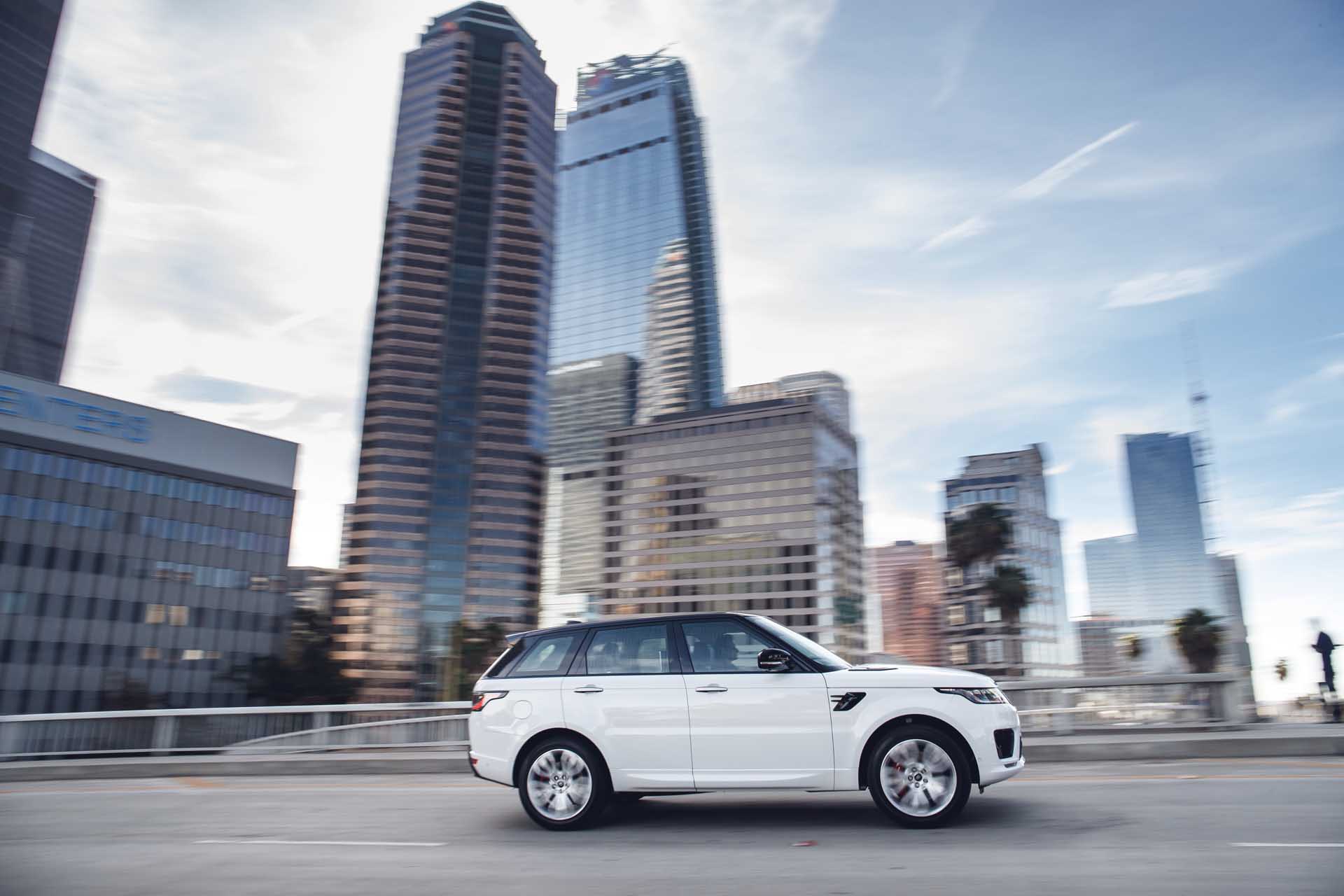
It’s no wonder that the jet-set is often found in Range Rover Sports—in top trims it takes a small fortune to even buy one.
Our rating of 8 applies to the lowly base Range Rover Sport SE that’s hardly lowly at more than $70,000 to start. For that sum, buyers will get 19-inch wheels, LED headlights, leather upholstery, power-adjustable front seats, an adjustable air suspension, power liftgate, a 12.3-inch digital instrument cluster, navigation, active safety features (that we cover above) and a pair of 10.0-inch touchscreens for infotainment and climate controls. Android Auto and Apple CarPlay compatibility are in the mix, mercifully replacing the software on (just) one touchscreen. Land Rover’s new-car warranty isn’t as generous as Jaguar’s, but it’s still good: All Range Rover Sports are covered, bumper to bumper, for 4 years/50,000 miles.
Like last year, the Range Rover Sport ascend the mountain of cash in SE, HSE, HSE Dynamic, HST, Autobiography Dynamic, and SVR trims.
The SVR is king of the hill again, although we wouldn’t necessarily take it off road. Included in the high-po Range Rover Sport are 21-inch wheels, heated front and rear seats, three-zone climate control, premium audio from 19 speakers, advanced active safety features (covered above), performance seats shod in Windsor leather, and unique exterior accents. Before options are added, the 2020 Range Rover Sport SVR costs more than $115,00 to start. The final price can rise as high as $150,000, especially when trimmed in British Racing Green on red and black hides with premium audio and a visit from the carbon fiber fairy. Not that we’ve saved the build for our big lottery haul someday or something.
Our recommended Range Rover Sport starts with a V-8 and the HSE Dynamic trim, which adds 21-inch wheels, a two-speed transfer case, leather upholstery, premium audio, premium audio, and soft Windsor hides for about $89,000.
Touch Pro Duo
Range Rover’s infotainment system changed last year to twin 10.0-inch touchscreens perched one atop the other, which the automaker calls Touch Pro Duo.
The bottom touchscreen handles climate controls and vehicle functions including terrain controls, the top screen handles navigation and audio functions. Thankfully there are still hard knobs for temperature settings and volume controls, but the rest of the news isn’t as good.
Range Rover’s infotainment system can lag, and in some cases has completely shut off on us. There’s some reprieve via smartphone operating systems such as Apple CarPlay and Android Auto, but they’re only as stable as the hardware. And sometimes the hardware doesn’t want to play ball at all.
It’s a minor inconvenience that most owners will anticipate or ignore, but Touch Pro Duo can be complicated for even minor tasks. Turning on the heated seats, for instance, requires physically pressing the temperature knob and twisting in one direction—easy. Adding a frequent destination or function to the favorites screen? Swipe at least two menus over, find an opening, press the “+” button, find the function, add the button, resize the button to be one icon, three icons, or more icons, then long press to set. The days of holding down a button for a favorite radio station seem far behind us.
Review continues below
0 Kommentarer